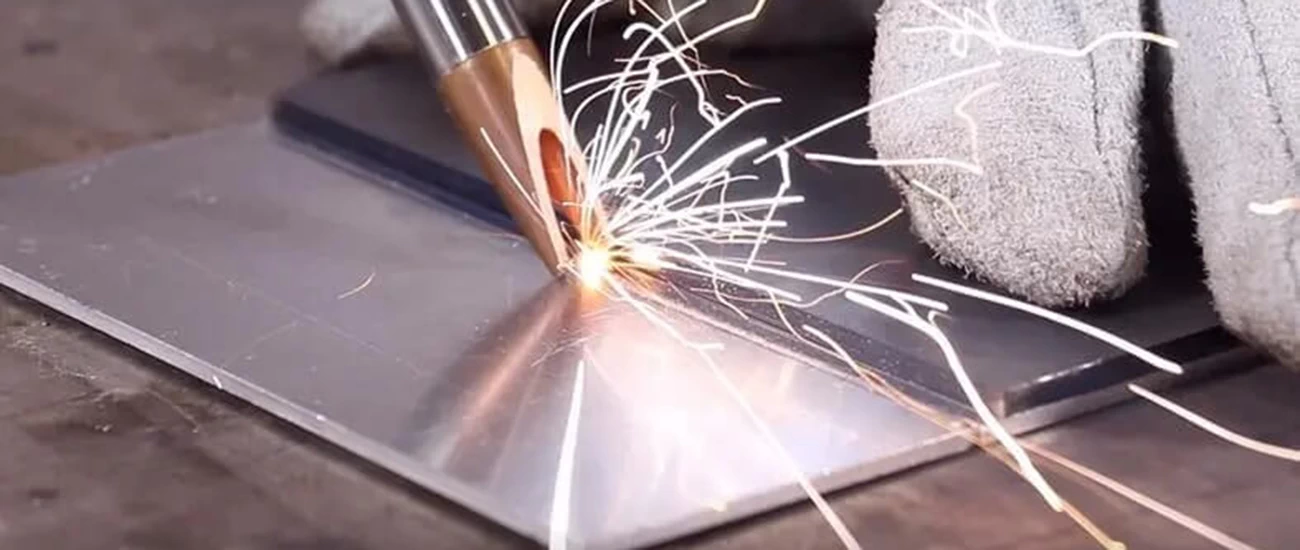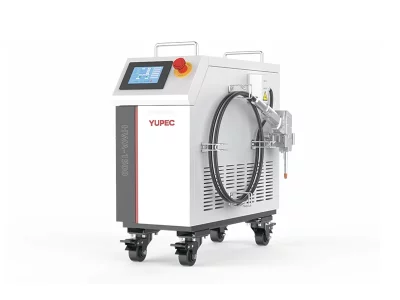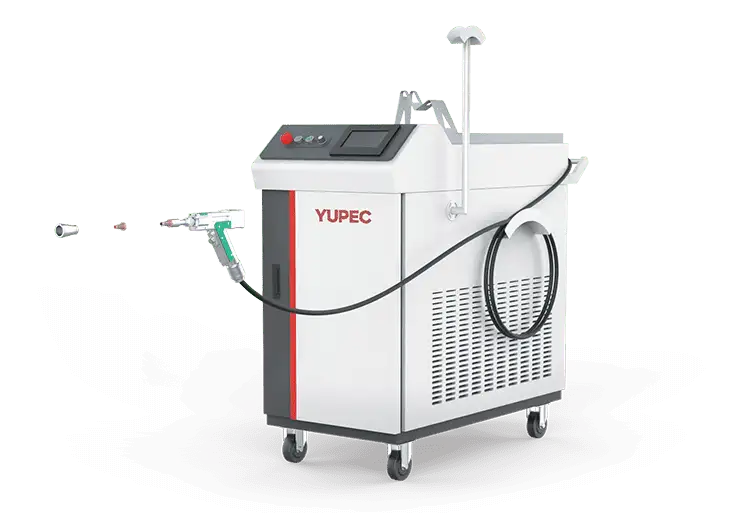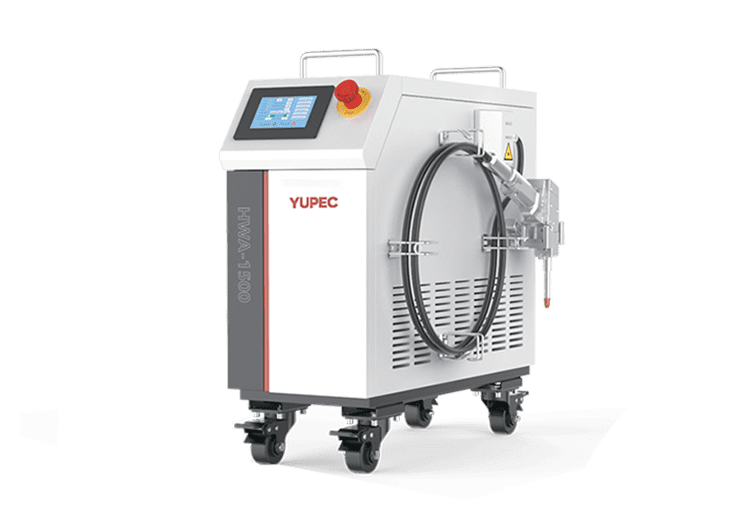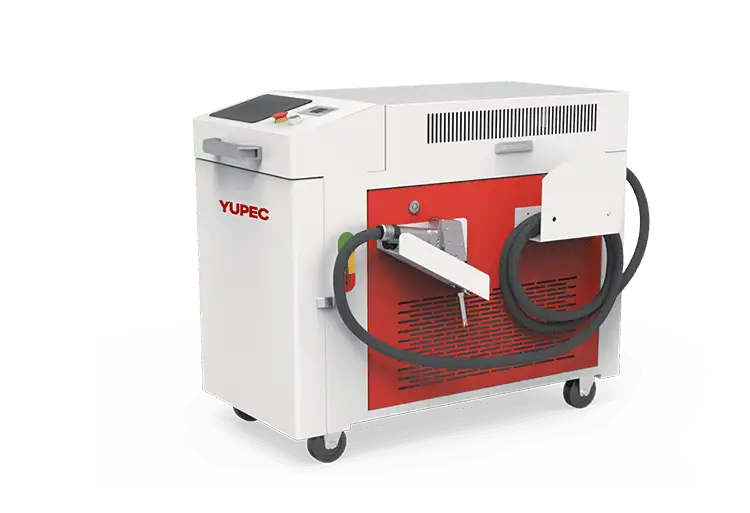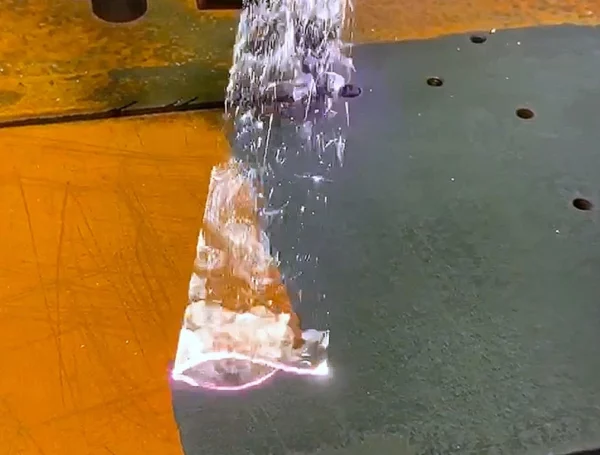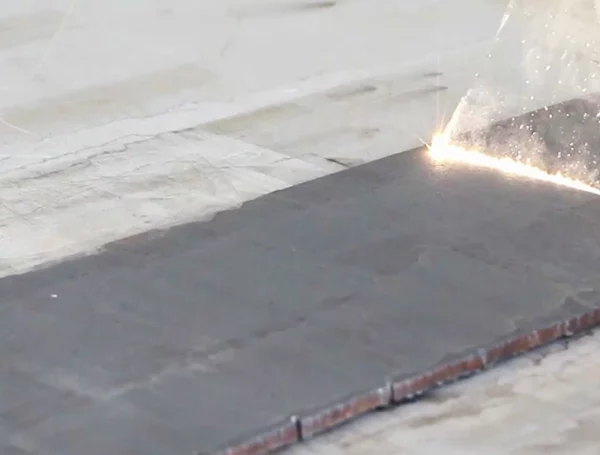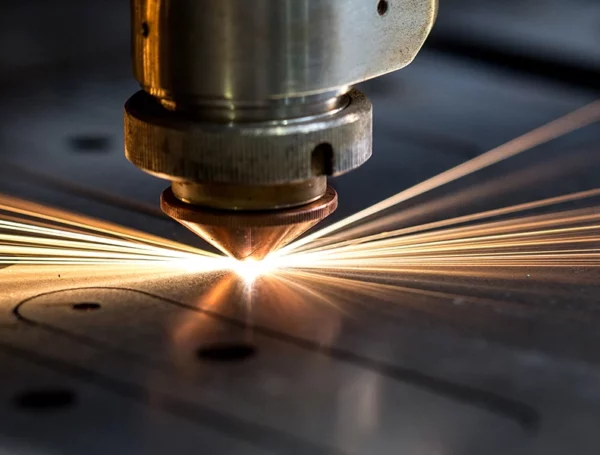Table of Contents
Handheld laser welders, or handheld laser welding machines, are a crucial modern tool used in various applications, including manufacturing, maintenance, and precision assembly. However, these devices generate a significant amount of heat during operation, requiring effective cooling technology to maintain their performance and lifespan. This article explores the cooling technology for handheld laser welding machines and addresses the challenges related to heat management.
Heat Management in Handheld Laser Welding Welders
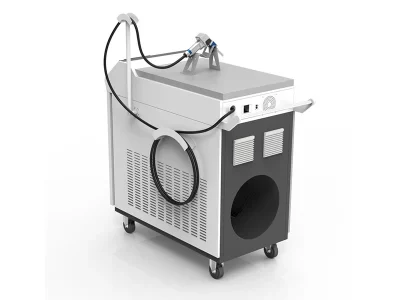
Handheld laser welders work by focusing a high-energy laser beam onto the workpiece. This process generates a substantial amount of heat, which, if not properly managed, can lead to overheating, reduced performance, and shortened equipment lifespan. Therefore, heat management is essential to maintaining stable equipment operation.
Basic Principles of Cooling Technology
Cooling technology relies on fundamental principles, including conduction, convection, and radiation. Conduction involves the transfer of heat through direct contact with surrounding objects. Convection transfers heat through the movement of fluids, typically air or liquid. Radiation, on the other hand, transfers heat through electromagnetic radiation. These principles play a crucial role in ensuring effective heat dissipation and control in handheld laser welding machines.
Applications of Cooling Technology in Handheld Laser Welding Machines
When discussing cooling technology for handheld laser welding machines, two main types of systems are involved: air-cooling systems and water-cooling systems. These technologies are essential in the applications of handheld laser welding machines, each with its unique characteristics.
Air-Cooling Systems
Air-cooling systems are common cooling technology, especially for lightweight and portable handheld laser welding machines. These systems use built-in fans to draw ambient air into the equipment to cool heat sinks or radiators. Here are key features and applications of air-cooling systems:
Portability
Air-cooling systems are typically compact and lightweight, making them suitable for tasks that require transporting equipment to various workspaces. Operators can easily carry handheld laser welding machines without the need for additional cooling equipment.
Simple Maintenance
Air-cooling systems are relatively easy to maintain because they do not involve liquids or a complex network of cooling pipes. Operators need to ensure that the fans remain clean to maintain cooling efficiency.
Limitations in High-Power Applications
While air-cooling systems are suitable for lightweight tasks, their cooling capacity may be limited in high-power or extended operation scenarios. This limitation may lead to equipment overheating under heavy loads.
Water-Cooling Systems
Water-cooling systems are typically more suitable for high-power handheld laser welding machines. These systems circulate cooling liquid, often water or specialized coolants, to absorb and remove heat. Here are key features and applications of water-cooling systems:
Efficient Heat Dissipation
Water-cooling systems can provide efficient heat dissipation, making them suitable for tasks that require prolonged high-power welding. They effectively remove heat from the equipment.
Suitable for Larger Machines
Water cooling systems are especially well-suited for large handheld laser welding machines. These devices often require robust cooling support due to their high power output and extended operation.
Slightly Heavier
Compared to air cooling systems, water cooling systems tend to be somewhat heavier. This is because they involve liquid coolant and associated piping. As a result, the equipment may be bulkier, and they may require more maintenance.
Optimizing Cooling Technology
To enhance the performance and efficiency of cooling systems, various measures can be taken:
- Radiator Design: Optimizing radiator designs to increase the heat dissipation surface area, thus improving heat dissipation efficiency.
- Coolant Selection: Choosing efficient coolants to enhance the performance of water-cooling systems.
- Temperature Monitoring: Installing temperature sensors to monitor equipment temperature and adjust cooling system operation as needed.
- Material Selection: Using high thermal conductivity materials for radiators and heat sinks to improve heat transfer efficiency.
Future Trends
In the future, cooling technology for handheld laser welding machines will evolve towards higher power and efficiency to meet the growing market demands. Design emphasis will also be placed on lightweight and compact solutions to maintain equipment portability. Smart and adaptive control systems will play a significant role in monitoring equipment temperature and automatically adjusting cooling systems to enhance efficiency and extend equipment lifespan. The application areas of handheld laser welding machines will continue to expand, covering industries such as automotive manufacturing, aerospace, medical equipment, electronics production, and more. This will drive diversification in cooling technology to cater to various application requirements. Ultimately, sustainability and environmental considerations will become prominent, including more efficient energy use and waste reduction to meet evolving environmental standards. These trends will propel the development of handheld laser welding technology, offering more efficient, sustainable, and intelligent solutions for a wide range of applications.


